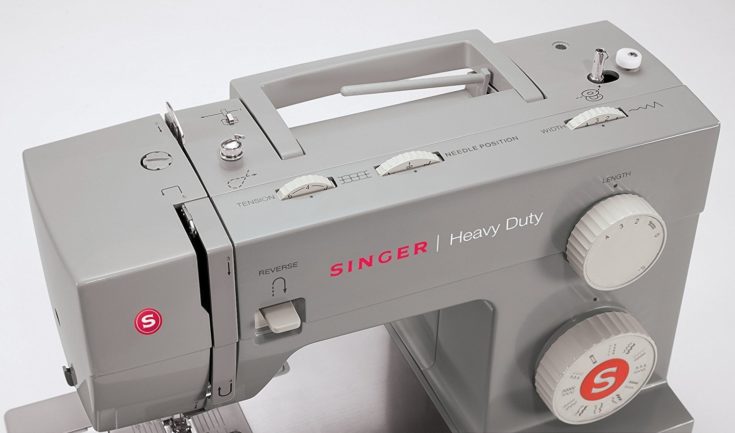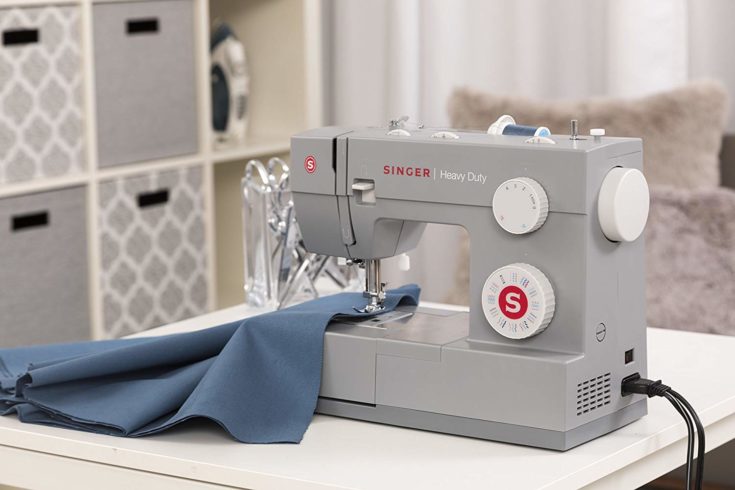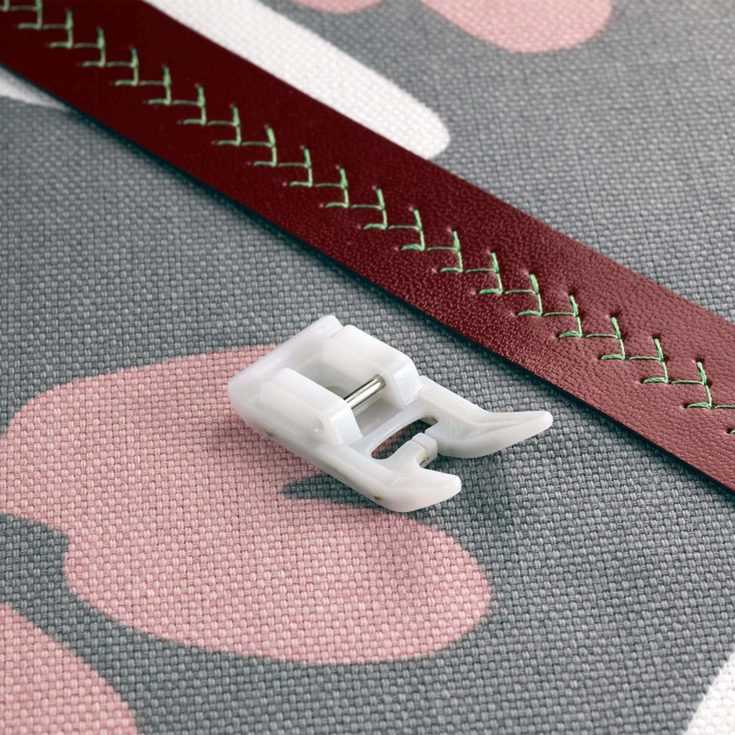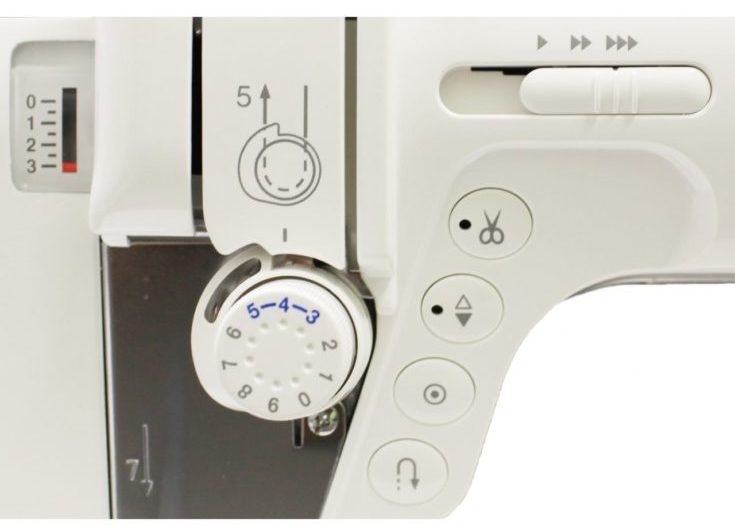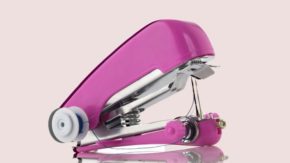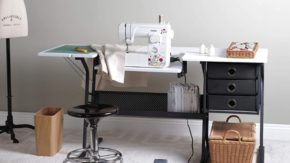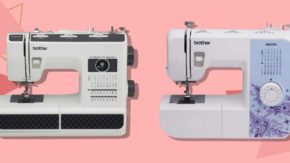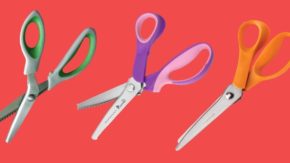Beginners that adventure into the sewing craft are much better off investing in a basic sewing machine but have to choose one that has features that can smoothen the experience, or else it can become really frustrating, tempting people into quitting. However, there are people who need machines that can handle really extensive sewing projects, with stubborn and thick fabrics that are otherwise complicated to work it. For those, there’s always the heavy-duty sewing machine that comes to the rescue.
5 Best Heavy-Duty Sewing Machine Comparisons
| IMAGE | MODEL | FEATURES | ||
|---|---|---|---|---|
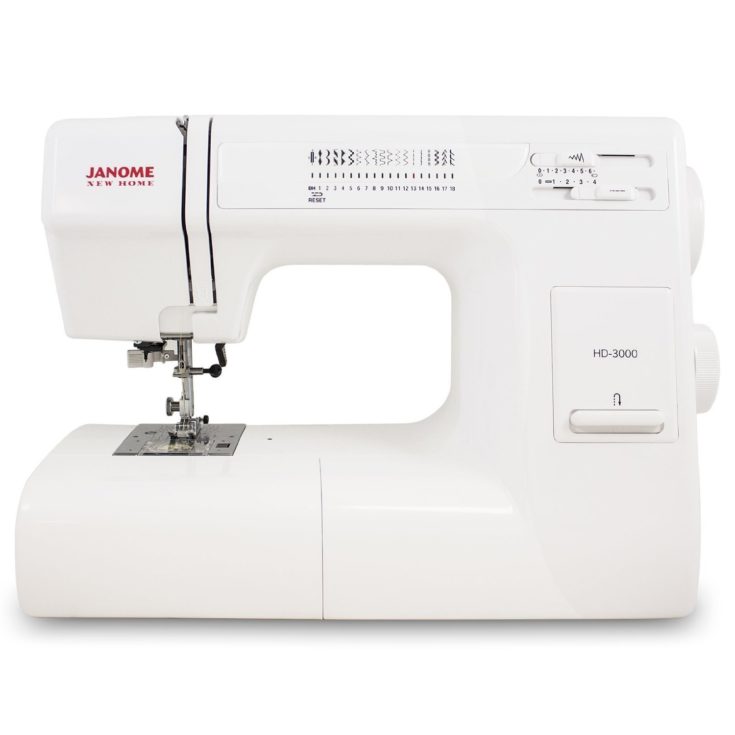 | Janome HD3000 Heavy-Duty Sewing Machine |
| View Product | |
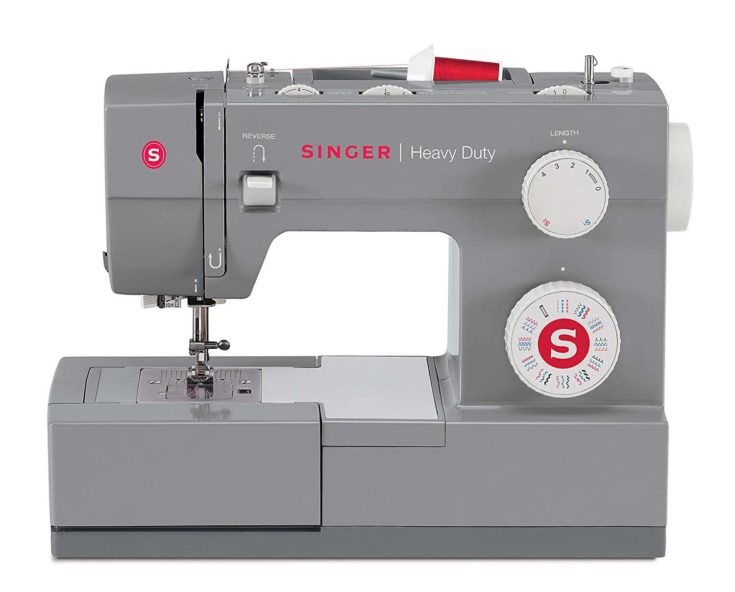 | SINGER Heavy Duty 4432 Sewing Machine |
| View Product | |
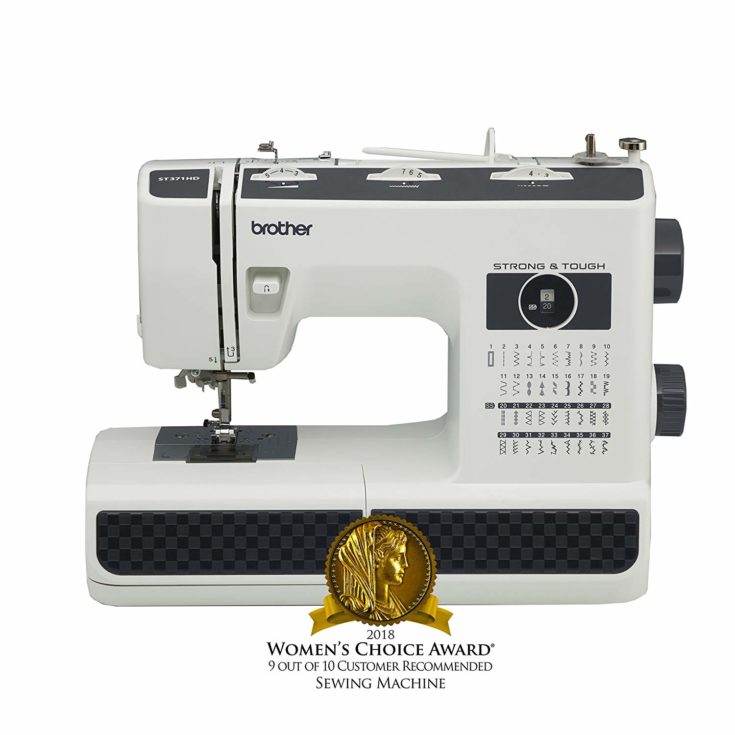 | Brother ST371HD Sewing Machine |
| View Product | |
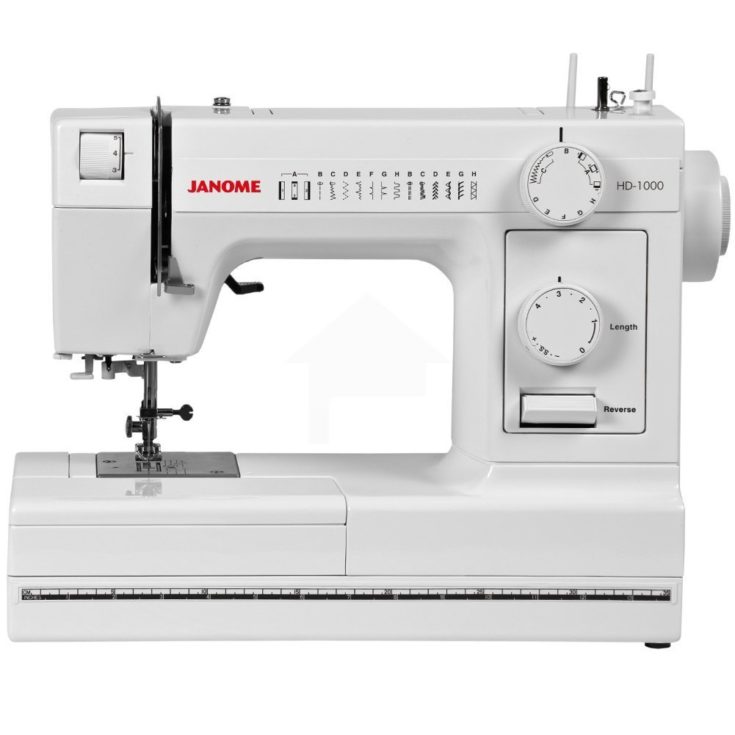 | Janome HD1000 Heavy-Duty Sewing Machine |
| View Product | |
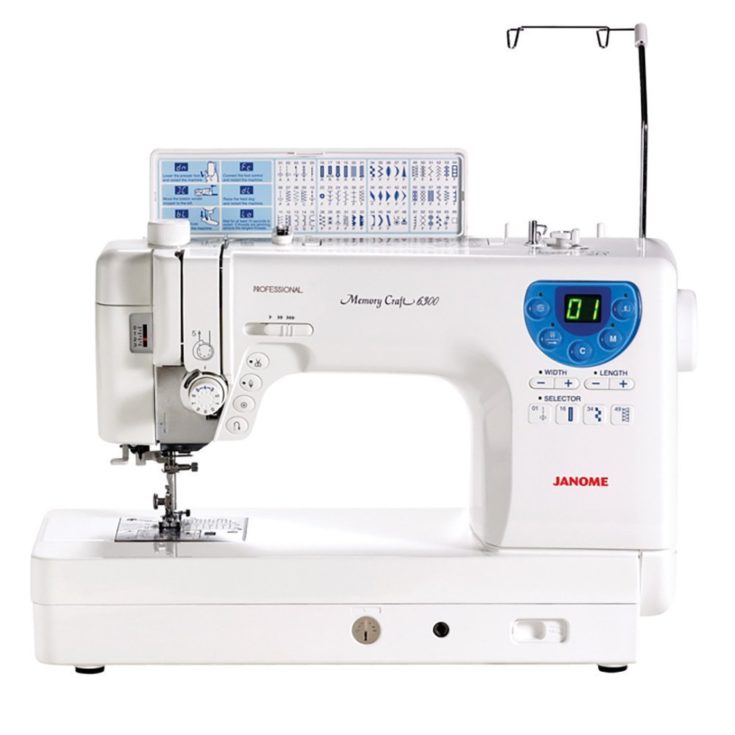 | Janome MC-6300P Professional Heavy-Duty Sewing Machine |
| View Product |
What Is a Heavy-Duty Machine?
The topic of what makes a sewing machine a heavy-duty one is quite subjective if you ask me. Some people consider only industrial machines to be heavy-duty because they are designed to be excellent at working with complicated fabrics at really high speed. But does that mean that only professional sewers should get to work with such a machine?
If you are a domestic user and think you might benefit from such a product, consider the type of sewing that you usually have to perform. Do you work with heavy fabrics, such as denim? Do you find yourself doing a lot of quilting projects? Are you working on an upholstery project? Because if you are, you might need a heavy-duty machine to see these projects through.
Basically, a heavy-duty sewing machine is one that can handle a lot of complicated projects, and allows the user to work on the fine details, such as buttonholes or blind hems. These machines can operate at higher speeds compared to more basic products. If a regular machine can create 1,000 stitches per minute, a heavy-duty one can reach 6,000 stitches in 60 seconds.
The truth of the matter is, if you don’t make clothes or work on sewing projects for a living, you have no need for 6,000 stitches per minute. This is a feature that helps save time, but if you’re into it for the sake of the craft, you might not want to work that fast. Where’s the fun in finishing projects so fast?
As mentioned at the beginning of this section, you might find it hard to realize which sewing machines are heavy-duty, since they are mostly associated with industrial use. To be honest, you can’t tell unless you compare them to more basic machines. Heavy-duty machines can be either for industrial use or for domestic use, and there’s a huge difference between them.
Telling the Difference
Sorry if we confused you. Let’s take a moment to explain how you can tell a regular domestic sewing machine apart from a heavy-duty domestic one. The easier way to know what kind of product you have in front of you is to analyze its purpose. Regular sewing machines are designed for simple projects, while heavy-duty machines are more rugged, can sew through multiple layers of fabric, operate at higher speeds, have more powerful motors, and so on.
Another way to tell the difference is to look at the number of features. Heavy-duty machines don’t really have that many features compared to regular machines, which can have more than 50 built-in stitches. That’s because people who use heavy-duty machines are interested more in the quality and durability of the stitch rather than the pattern.
It all comes down to this: if you’re a home user, you don’t need a heavy-duty industrial sewing machine: What you need is a domestic machine with fewer features, but capable of handling fabrics that are hard to work with (and that’s what we’ll be focusing on in the second part of this article).
Benefits of Using a Heavy-Duty Sewing Machine
Don’t be fooled by the statement we’ve just made, about heavy-duty machines not being as rich in features as more regular models. That doesn’t make them less useful, nor does it mean they don’t bring plenty of benefits to the table. With a heavy-duty sewing machine, you can:
- Work with fabrics such as leather and denim. You will also be able to perform quilting projects without having to worry about broken or jammed needles.
- You can work at higher speeds, and higher speeds mean more free time to work on other projects, if that’s something you might be interested in.
- Because of their more “simplistic” nature, heavy-duty sewing machines are easier to master. That means that you’ll be able to get acquainted quite fast with what they do and how you can work with them.
- Heavy-duty machines are also more durable compared to mainstream models. If you’re willing to make a larger investment upfront (considering the fact that they are also more expensive compared to basic models), then you’ll end up owning a machine that’s resistant in the long haul.
However, if you want to be able to enjoy all the benefits we’ve listed above, it’s important for us to tell you what are some of the features that you have to look out for when you’re on the market looking for a product in this category:
- If you want to be able to learn how to use the machine fast, you’ll need to opt for one that has an intuitive design (or, as product design experts like to call it, user-friendly design). When you own a machine will levers and buttons and dials that are clearly marked, you will learn what each of these does without having to check the product manual every five minutes. This is particularly useful for people who lack the patience to master a new device.
- Beginners and people who want to improve their sewing speed shouldn’t just pay attention to how many stitches a machine can create per minute, but also look into features that help save time. When you buy a machine that has an automatic needle threader, automatic bobbin winder, or automatic tension adjustment, you’ll save valuable time on your future projects.
- If durability is the aspect you’re most interested in, you want to look for sewing machines that have a metal construction. As a general note, industrial sewing machines are made entirely out of metal, but those designated for domestic use will have just some metal parts. Keep in mind that when you buy a sewing machine that has plenty of metal in its construction, you are sacrificing portability. In our own humble opinion, a heavy-duty sewing machine that’s designed with portability in mind isn’t exactly a heavy-duty machine.
Top 5 Heavy-Duty Sewing Machine Reviews
If you are a domestic user that’s looking for the top sewing machines for home use, the following five models have been carefully selected for you. Take a look!
Janome HD3000 Heavy-Duty Sewing Machine

- Dimensions: 10 x 19 x 15 inches
- Weight: 23 pounds
- Number of stitches: 18 built-in stitches
- Sewing speed: 860 stitches per minute
Janome will always be a powerful brand when it comes to sewing machines, but the HD3000 delivers everything you had hoped for in a heavy-duty machine. Thanks to the sturdiness and the features of the HD3000, you will be able to work with thick layers of fabric, such as leather or upholstery.
The machine features a heavy-duty metal frame that stands for a durable product, but also shows that the machine can justify its price thanks to the components that are built to last. There are also plenty of features that you know are going to serve you right, such as the automatic needle threaders, the reverse stitch lever, or the one-step buttonhole.
Because we’re talking performance, this sewing machine reaches speeds up to 860 stitches per minute, which is definitely an upgrade compared to what more basic domestic sewing machines can deliver. The Janome HD3000 is a machine perfect for quilting, but also for those who want to work on larger and more complex sewing projects.
Who Should Purchase This?
Those of you that don’t require a computerized sewing machine, and can see their work through with just the 18 built-in stitches will discover that the HD3000 is a very cost-friendly and reliable product.
Pros:
- Good for quilting and large projects.
- Automatic needle threading.
- 18 built-in stitches.
- Foot pressure adjustment.
- One-step buttonhole.
- Reverse stitching.
Cons:
- Faulty at winding bobbins.
SINGER Heavy Duty 4432 Sewing Machine

- Dimensions: 15.2 x 6.2 x 12 inches
- Weight: 17.1 pounds
- Number of stitches: 23 built-in stitches
- Sewing speed: 1,100 stitches per minute
Moving on to something more money-friendly, we bring you the 4432, a sewing machine developed by Singer with plenty of features that are worth the praise. As one of the best-selling models available on third-party retailer websites, this heavy-duty machine is great for domestic use that requires handling tougher projects. Plus, there’s that neat gray design that definitely something that stands out from a crowd of all-white sewing machines.
Note that while this is a budget buy, it does have plenty of features compared to what you pay for it. However, don’t expect this to be the best product of its kind, and if you plan on sewing through seven layers of fabric at once, it probably won’t see your task through. It’s true that the 4432 is a great machine for day-to-day sewing projects, and is probably best matched with people that perform light sewing projects or use the machine for simple crafts.
However, those of you who are looking for an optimal quilting machine, or those who sew for a living and need a machine that can handle all sorts of fabrics, will need one that is much more resistant to wear and tear.
The machine does come with quite a powerful motor, and can create up to 1,100 stitches per minute. It has plenty of features that domestic users can use to their advantage, such as adjustable stitch length, a heavy-duty metal frame, automatic needle threader, and a drop-in bobbin system.
Who Should Purchase This?
Those of you that want a heavy-duty sewing machine but without spending a small fortune on it should turn their attention to this Singer model, which is a pretty sturdy example of how Singer machines came to make history in this industry.
Pros:
- High stitching speed.
- Good price.
- Powerful motor.
- Automatic needle threader.
- Adjustable stitch length.
Cons:
- Lacks embroidery stitches.
- Not suitable for multiple or difficult fabrics.
Brother ST371HD Sewing Machine

- Dimensions: 7.9 x 16.1 x 12.2 inches
- Weight: 18.4 pounds
- Number of stitches: 37 built-in stitches
- Sewing speed: 800 stitches per minute
A lot of people will tell you that a heavy-duty sewing machine is not for beginners. To them we say: why not? It’s true that beginners are mostly advised to opt for cheaper sewing machines, but investing in a heavy-duty model like this one might be a better idea, because the number of functions is limited as to help you master them, without causing frustration of getting lost into so many stitches and options.
So, what is there to be said about this fun little fellow? The Brother ST371HD comes with 37 built-in stitches, which is a lot to start off with if you ask me. But that doesn’t stop me from liking this baby, because it offers a great price-to-quality ratio.
The six included presser feet have a non-stick foot amongst them, which is really great for working on thicker and more stubborn pieces of fabric. It comes with adjustable feed dogs, the possibility to create beautiful embroidery stitches, it has a sewing speed on 800 stitches per minute, and the working area is backed by a LED light, to make it easier to see in poorly-lit conditions. It’s probably one of the best sewing machines for monogramming.
Who Should Purchase This?
The Brother ST371HD belongs to the company’s “Strong and Tough” line of products, and it’s designed to be a beginner-friendly machine that comes with plenty of features to keep someone who has just discovered their passion for sewing interested in the craft.
Pros:
- Plenty of included accessories.
- Adjustable feed dogs.
- Includes six sewing feet.
- LED light.
- Free arm.
- Automatic needle threader.
- Heavyweight needles.
Cons:
- Questionable durability due to its lightweight.
Janome HD1000 Heavy-Duty Sewing Machine

- Dimensions: 18.2 x 8.5 x 15.2 inches
- Weight: 21.8 pounds
- Number of stitches: 14 built-in stitches
- Sewing speed: 840 stitches per minute
There’s something about the Janome HD1000 that makes it very appealing to us, although it doesn’t have features that make it stand out. It’s probably because it’s a mid-range machine that comes at a decent price, but the quality of the stitching and the included features are just right.
Don’t be fooled by the Janome’s HD1000 simple design: it’s powerful enough to handle extensive use and come with an aluminum frame to prove just how solid it is. It can sew up to 840 stitches per minute and includes features like an automatic needle threader, adjustable stitch length, and a free arm.
Who Should Purchase This?
The Janome HD1000 heavy-duty sewing machine is designed for people who want a sturdy product that can handle fabrics such as leather or denim without jamming issues.
Pros:
- Free arm.
- Automatic needle threader.
- Free-motion sewing.
- Built-in needle threader.
- Adjustable stitch length.
- Includes a cover.
Cons:
- Limited number of stitches.
Janome MC-6300P Professional Heavy-Duty Sewing Machine

- Dimensions: 13 x 26 x 18 inches
- Weight: 36.2 pounds
- Number of stitches: 66 built-in stitches
- Sewing speed: 1,000 stitches per minute
We wanted to add a computerized model in this review because we find it amazing how much technology has evolved up to a point where you can visualize the selected stitch on a small display, which is basically giving you feedback over the current settings of your machine.
We feel that the Janome MC-6300P is one of the best products of its kind, because it comes with 66 built-in stitches that can really add versatility to your future sewing projects. Because it is a machine that’s designed for quilting, it is also capable of allowing you to work with complicated fabrics.
The machine can memorize information about the automatic thread cutter feature, and the display can provide you with plenty of useful information, such as an indicator that will tell you when your bobbin’s low.
Who Should Purchase This?
Those of you that really have your heart set on a computerized heavy-duty sewing machine, know that the Janome MC-6300P sports an impressive 66 built-in stitches, is perfectly useful for quilting projects, and comes with an advanced feed mechanism.
Pros:
- Good for quilting.
- Sewing speed of 1,000 stitches per minute.
- Advanced feed mechanism.
- Low bobbin indicator light.
- Drop feed control.
- Extension table.
Cons:
- Has plastic and rubber parts.
Bottom Line
Heavy-duty machines are normally designed for industrial use. They are made entirely out of metal, completely lack portability, and are designed to make as many stitches as possible each minute. However, they also cost very much, which brings us to the concept of heavy-duty machines designed for domestic use, like the ones we’ve just shown you.
These machines are not as powerful as industrial ones, but they are better compared to regular domestic models, that have plenty of features, but lack the capacity to handle tough fabrics. While each of the models above is an outstanding representative of its category, it’s important to determine what exactly you need a sewing machine for before spending hundreds of dollars on one.
